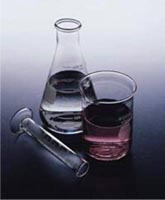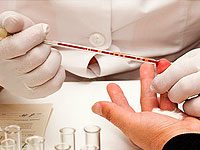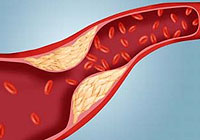Biochemical blood test is widely used in medicine and is used to assess the metabolism in the body and internal organs. In biochemical analysis of blood, a large number of parameters are determined.
Content
 Biochemical blood test is one of the most common studies in modern medicine, with which you can estimate the metabolism in the body and the work of the internal organs - kidneys, liver, pancreas, etc. As a rule, during this analysis, a sufficiently large number of parameters are investigated (condition of blood cells, biochemical, immunological, hormonal indicators).
Biochemical blood test is one of the most common studies in modern medicine, with which you can estimate the metabolism in the body and the work of the internal organs - kidneys, liver, pancreas, etc. As a rule, during this analysis, a sufficiently large number of parameters are investigated (condition of blood cells, biochemical, immunological, hormonal indicators).
Due to the versatile diagnostic capabilities, the biochemical blood test is used in many areas of medicine: therapies, endocrinology, urology, gastroenterology, cardiology, gynecology and many others. A set of expired parameters for clarifying diagnostics depends on the disease and is determined by the attending physician. In addition, the biochemical blood test is needed for early diagnosis of diseases, as it allows you to identify violations in the work of internal organs, when there are no external symptoms of the disease.
There are certain norms of biochemical blood testing. These are statistically set indicators for healthy people of a certain floor and age. Deviation from these indicators - a symptom of a variety of violations in the activities of the body, failure in the work of any organs or systems.
The value of the main indicators
Standard biochemical blood test includes a large number of indicators. Let's try to decipher some of them.
Glucose
Glucose - Main Carbohydrate Indicator. Its level can be lowered with some endocrine diseases, impaired liver function. Increased glucose content is observed in diabetes. Sometimes the jump of this indicator may be in the first watches of the stroke, heart attack, in injuries, infections, pancreatitis.
Bilirubin
Bilirubin - product processing in the liver of old red blood cells (red blood cells). Knowing this indicator, you can determine how the liver works. Improving the level of general bilirubin - symptom of jaundice, hepatitis, blockage of bile ducts (for example, with stones in a bustling bubble or tumor). High-digits of bilirubin can be determined after a long low-calorie diet. If the content of the associated bilirubin increases, then, most likely, sick liver.
Common protein and its fractions
The level of general protein falls for diseases of the liver, kidney, long inflammatory processes, starvation. Increasing the content of general protein can be observed in some diseases of blood, diseases and states accompanied by dehydration.
For more accurate diagnosis of diseases, protein fractions are determined: albumin and globulines.
The drop in the level of albumin can talk about diseases of the liver, kidney or intestines. Usually this indicator is reduced in diabetes mellitus, heavy allergies, burns, inflammatory processes. Elevated albumin - a signal on impaired immune system or metabolism.
Level up γ-Globulinov speaks of the presence of infection and inflammation in the body. Reduction may indicate immunodeficiency.
Increased content α1-globulins are observed in acute inflammatory processes.
Level α2-globulins can increase in inflammatory and tumor processes, kidney diseases, and decrease in pancreatitis and diabetes.
Changing number β-Globulins are usually observed in bodybuilding violations.
C-jet protein is practically not detected. However, with inflammatory processes (appendicitis, inflammation of the lungs and others.), infections, tumors its content increases. The definition of this indicator is of great importance in rheumatism and rheumatoid arthritis. With it, you can determine the severity of the disease and the effectiveness of treatment.
Cholesterol and lipoprotein
The fat exchange is judged by cholesterol content, lipoproteins, triglycerides.
Increased cholesterol levels indicates the development of atherosclerosis, ischemic heart disease, vascular diseases and stroke. Cholesterol levels also increases with diabetes, chronic kidney diseases, reducing the thyroid function. Cholesterol is becoming less than the norm when increasing the function of the thyroid gland, chronic heart failure, acute infectious diseases, tuberculosis, acute pancreatitis and liver diseases, some types of anemia, exhaustion.
If content β-Lipoproteins are less than the norm, it speaks of violations of the liver function. Increased level of this indicator indicates atherosclerosis, violation of fats, as well as diabetes mellitus.
Triglycerides - body fat molecules, their content reflects the predisposition to atherosclerosis. In terms of triglycerides, you can judge the features of nutrition. It increases with the use of a large number of animal fats. High digits are characteristic of some kidney diseases, reduce the function of the thyroid gland. A sharp increase in this indicator indicates inflammation of the pancreas.
Urea and creatine
Urea - product splitting of proteins, which in a healthy person is excreted from the body by the kidneys. Therefore, the increase in urea content indicates a kidney disease.
Improving the level of creatinine indicates a violation of the work of the kidneys, diabetes, skeletal muscles diseases.
Blood uric acid level may increase when gougraning, leukose, acute infections, liver diseases, renal-stone disease, diabetes, chronic eczema, psoriasis.
Amylase
Changing the level of amylase indicates the pathology of the pancreas. This indicator, as a rule, rises in acute pancreatitis, blockage of pancreatic duct by stones, spikes or tumor. Sometimes the level of amylase increases with renal failure. Reducing the level of amylase in the blood may indicate hepatitis, raising the level of thyroid hormones.
Alkaline phosphatase, alosa, asat, γ-Gt
An increase in alkaline phosphatase indicates diseases of the liver and bile ducts.
On the violation of the liver function indicates the increase in such indicators as Alat, Asat, γ-Gt.
Electrolytes of blood
The change in the concentration of phosphorus and calcium in the blood indicates a violation of mineral exchange, which happens with kidney diseases, rickets, some hormonal disorders. The content of calcium in the blood is increased by diseases of the thyroid gland, as well as with some forms of cancer.
Changing the concentration of potassium, sodium and chlorine adversely affects the work of the internal organs, especially the heart.
Having on the hands of the biochemical blood test results, it is easy to compare the indicators of its analysis with the norm. But on the basis of these data it is impossible to make a diagnosis. Only a doctor who compares them with complaints of the patient and the symptoms of the disease can give a reliable and correct interpretation of the analysis results.









